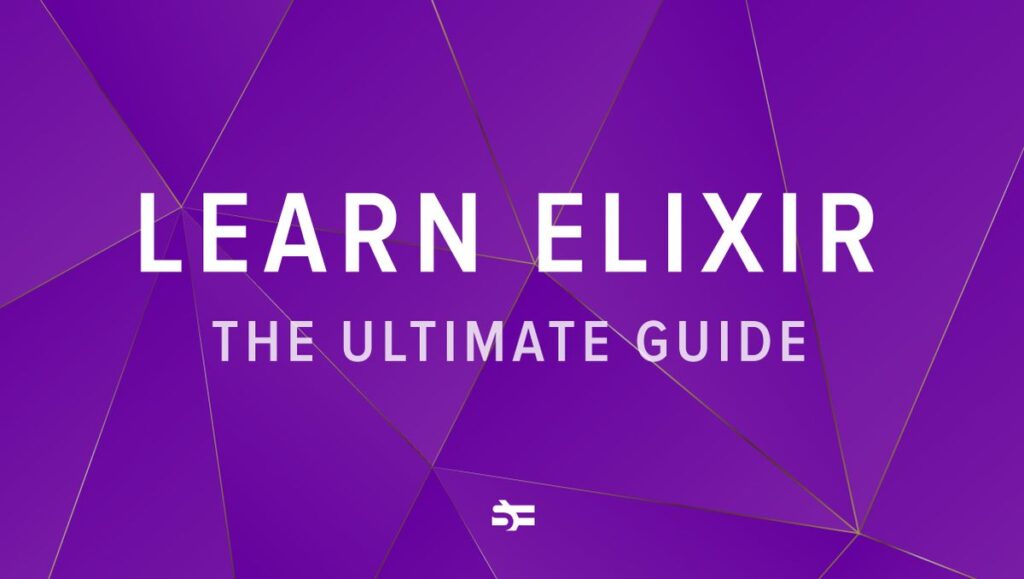Elixir is an easy-to-learn programming language that’s constantly gaining more followers. This beginner’s guide will walk you through its tools, use cases and syntax. Let’s unveil features that make this language so beloved.
Every new technology starts with various solutions that get progressively better. Think of computers. They’ve come a long way from bulky boxes of wires to today’s fine tiny tablets, haven’t they? Just because something works at a certain level doesn’t mean we shouldn’t strive to develop even better versions of them.
That’s exactly what José Valim did. Due to the lack of effective tools to handle concurrency problems in Ruby, he decided to build a new language to fill this and some other gaps.
Luckily for the tech world ― José succeeded! And in 2011, Elixir was born.
Click here – What Is An Idle Word?
What is Elixir?
Elixir is a functional, process-oriented programming language, efficient in providing scalability, concurrency, and fault tolerance.
The goal of Elixir was to be a solution that fixes issues that Ruby couldn’t handle. So, after searching for inspiration in various languages, José came across two that piqued his interest: Erlang and Clojure.
He loved everything about Erlang’s fault tolerance and Clojure’s metaprogramming. Of course, José looked into Ruby as well to develop similar features in his new solution.
As a result, he created Elixir to be Ruby’s successor, a perfect alternative for Clojure, and a dynamic language that runs in the Erlang Virtual Machine. As such, Elixir has grown in popularity and now serves various programming purposes.
Elixir use cases
Elixir is ideal for high-traffic systems with many connections. This comes as no surprise since it shares many features with Erlang, which is well renowned for running low-latency and fault-tolerant systems.
Therefore, Elixir works perfectly for web applications of any size, APIs, event-driven systems, chat backends (such as Whatsapp), embedded systems, and much more.
Here’s how top companies use Elixir:
- Discord uses Elixir as the backbone of its infrastructure. It enables flexibility and concurrency, allowing the app to handle large amounts of traffic and scale.
- Change.org looked for an event-driven technology with strong concurrency and fault tolerance. They tested four languages (including Elixir) to process 100k messages as quickly as possible. After evaluation, Elixir emerged as the most reliable and efficient choice.
- Pinterest employs Elixir for its notification systems. The language aids in improving app performance and reducing the number of servers needed. In comparison, Elixir’s Pinterest notification solution runs on 15 servers, while the prior Java’s system ran on 30! Moreover, Elixir’s code is around one-tenth the size of the old Java code.
- PepsiCo applies Elixir for workflow automation in managing marketing and sales systems. It enables PepsiCo’s teams to run operations concurrently, resulting in fast and effective interactions.
Click here – Lessons from Failed Fundraising: What We Learned from Our Mistakes
Elixir features and tools
Let’s look at some of Elixir’s most notable features.
Elixir is a functional programming language
Besides being process-oriented, Elixir is also a functional programming (FP) language. It lets you quickly write high-quality code with all the constructs you expect from modern FP languages. For instance, it provides immutable data structures (which are great for concurrency!) and pattern matching.
Rapid and safe refactoring
Refactoring refers to making changes to an existing code without affecting its original functionality. It’s one of the “risky” areas in development since it’s very easy to mess things up. However, refactoring is considerably easier in Elixir. You can make drastic adjustments without the fear of unintentional changes.
Support for concurrency
With Elixir, one slow process can’t disrupt the entire system even when your application is under an extreme load. This is because Elixir processes run separately from one another, share no memory, and operate concurrently. These characteristics are crucial for modern web solutions that must provide a consistent experience to all visitors.
High fault-tolerance
Elixir is exceptional in recognizing errors, lessening their effects, and recovering the code without human intervention. If one user submits a request that contains a bug, that process will crash, but all other users will remain unaffected. This way, Elixir prevents a bug in one process from impacting the entire application.
Elixir offers a range of helpful web development tools as well.
- Phoenix is Elixir’s web framework. It’s similar to other Model-View-Controller (MVC) web frameworks (like Rails and Django) and enables rapid development of rich and interactive web applications.
- Mix is a build tool. It allows developers to create and test applications, manage tasks, and perform many other project-related duties.
- IEx is Elixir’s interactive shell and your best friend when you first start working in Elixir. It provides many helpful features such as auto-complete, bug fixing, and code resetting.
Basics of Elixir code
Strings
Strings in Elixir are UTF-8 compliant, typically inserted between double quotes (e.g., “string”). If a string must contain a double-quote, use backslash: “the example with \ “two quotes\””.
Atoms
Atoms are constants, and their value is their name. You write an atom with a leading colon : and a sequence of characters (with or without quotes). Here are some atoms: :cat, :gray_cat, : “gray cat” .
Booleans
Booleans are true and false values. Elixir also provides predicate functions for determining the type of a value. For instance, to determine whether a value is a boolean or not, use the function: is_boolean .
Tuples
Tuples are immutable arrays with indexes. Because of their inflexible nature, tuples quickly revert their size but slowly append new values. When you update a tuple, you essentially make a copy of the tuple itself. Here’s how to insert a tuple: {?a,?b,?c} .
Pattern matching
Pattern matching is a technique that Elixir borrows from Erlang. For starters, remember that Elixir uses = as a match operator that prompts the left side to match the data structure on the right side. When the sides don’t match, a MatchError occurs:
iex> x = 1
1
iex> 1 = x
1
iex> 2 = x
** (MatchError) no match of right hand side value: 1
Ready to build great solutions?
We hope this beginner’s guide piqued your Elixir curiosity even more. The language is undoubtedly worthy of attention with its easy-to-learn but powerful features. These are especially crucial if you’re looking to develop high-performing and scalable solutions.
And, as we speak, its community is growing. So, make the most of this momentum to start learning and using Elixir for your great ideas! Check out the official docs and guides.
Happy coding!






